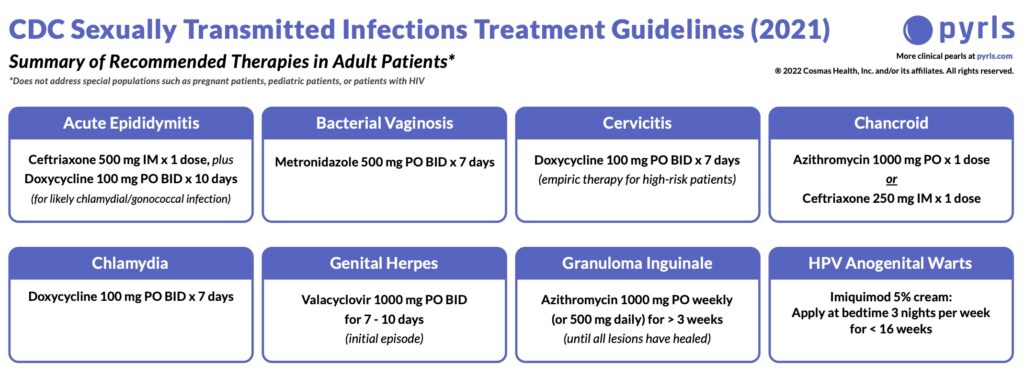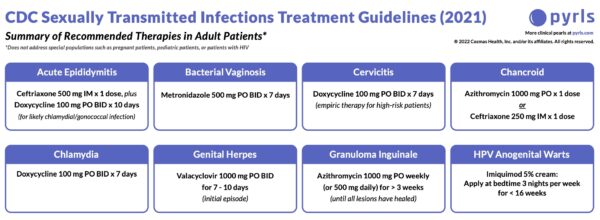Sexually transmitted infections (STIs) frequently come up in clinical practice and is also a frequent target for pharmacology and board exam questions! In this post, I will list my top 3 drugs to know and the sexually transmitted infections they treat. Below is a snippet from Pyrls.com which lays out the STI guidelines in an easy-to-read fashion. Get the full PDF for FREE when you sign up for an account right here!

Doxycycline
While doxycycline can be used for numerous sexually transmitted infections (STIs), it is most well known for managing Chlamydia. I remember always joking with classmates in school, that if you weren’t sure on an exam what to treat an infection with, doxycycline is a good guess because it can treat a lot of different infections. Pregnancy risks, sun sensitivity, and binding interactions are important considerations with doxycycline.
Ceftriaxone
Ceftriaxone is a third-generation cephalosporin and is often a workhorse in hospitalized patients for various non-sexually transmitted infections. It is also a commonly used agent for sexually transmitted infections. The downside of ceftriaxone is that it requires IM administration. The upside is that it typically only requires one dose. This can be beneficial in patients who have a history of poor adherence.
Metronidazole
Bacterial vaginosis is a common indication of metronidazole use. In addition, it can be used for trichomoniasis. I’ve covered metronidazole on the Real Life Pharmacology podcast previously, so if you’d like to refresh yourself with adverse effects, drug interactions, and other practice pearls, you can do that here.
- 30 medication mistakes PDF
- 18+ Page Drug Interaction PDF
- 10 Commandments of Polypharmacy Webinar based on my experiences in clinical practice



0 Comments